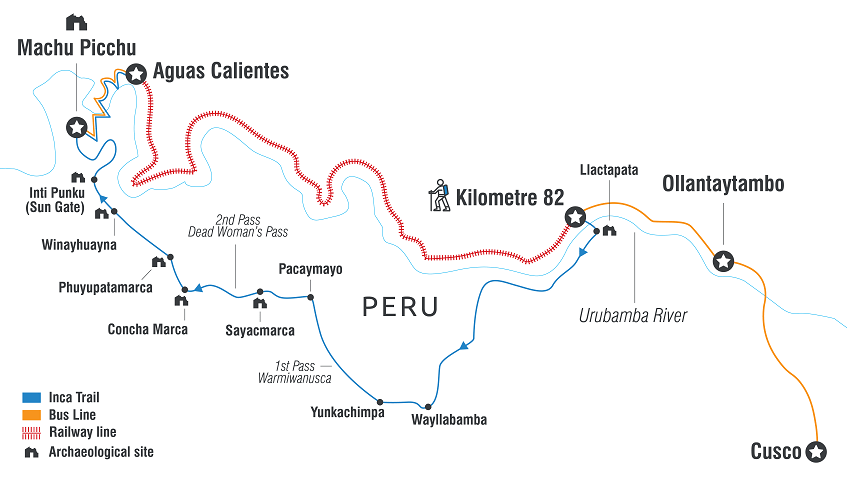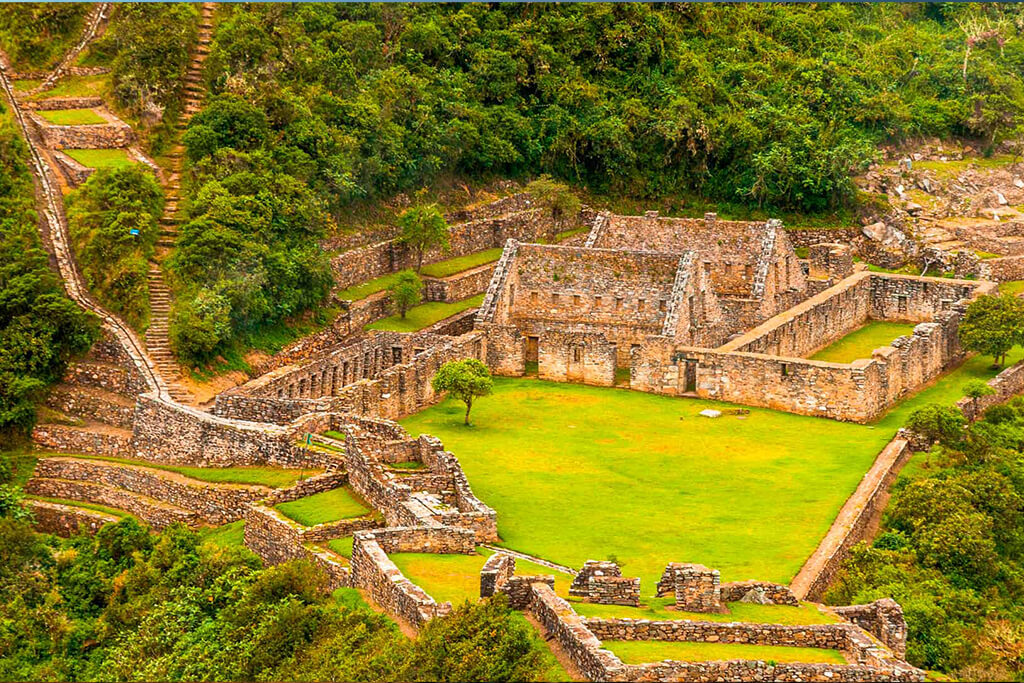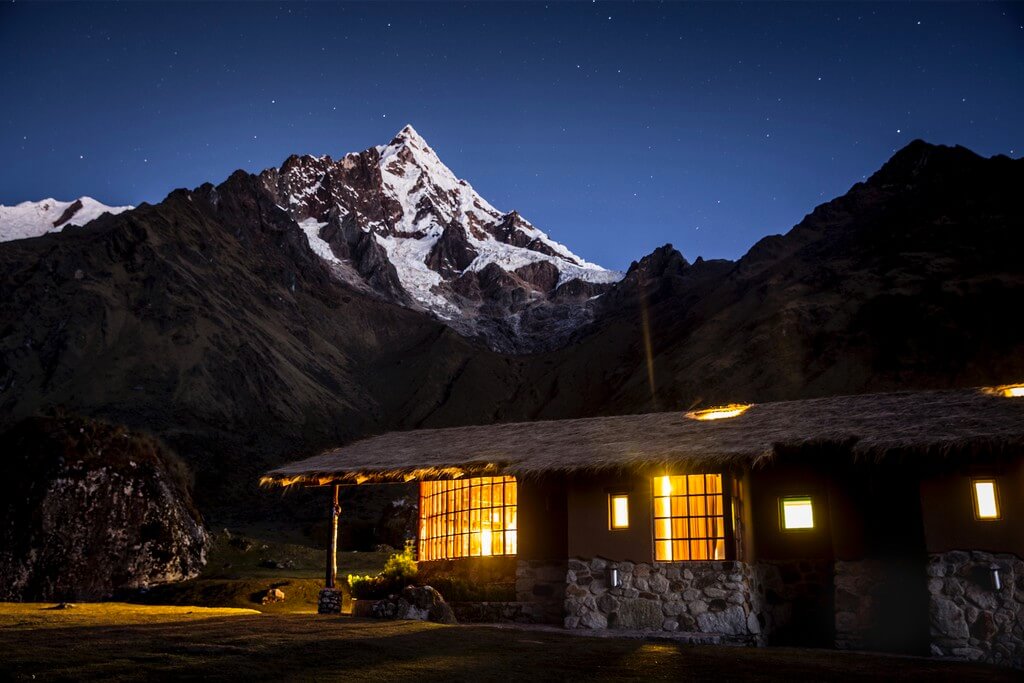Do you think that you can get to Machu Picchu by luxury train or low-cost minivan? So then check this article. But if you’re looking for something more adventurous, something you’ll remember for a long time, keep reading. Nothing replaces the feeling of satisfaction as if you do a several-day trek and as a reward, you get an incredible view of one of the seven wonders of the world. So what are your options?
1. Inca Trail
You’ve probably heard of it or you are just about to hear. It is the most popular trek to Machu Picchu, so popular that the government has had to limit the number of tourists to about 200 people a day so the trek doesn’t get destroyed. Therefore, it should be booked several months in advance, especially in the dry season, as this is the best time to do the trek. The trek is closed every year in February due to maintenance and landslides. It is basically an ancient road, partly built by the Incas, leading from the city of Cusco to Machu Picchu. Along the way, you will also stop at several unique ruins. The downside is that this trek tends to be crowded. Get ready for hundreds of stairs, camping, cold weather, a lot of walking, but an unforgettable experience.


Trek length: 4 days (can be extended to 5 days for those who want to stay one extra day on Machu Picchu)
Difficulty: Moderate
Length: 45 km, 12 km/day
Highest altitude: 4,200 m
Price: $650
2. Two-day Inca Trail
This trek was created exactly for those who want to try the classic Inka Trek, but do not have enough time. You will visit the incredible ruins of Wiñay Wayne and walk through the famous Sun Gate from where you will see Machu Picchu from a different perspective. The difficulty is milder, it is around a 10 km long walk and you sleep in a hotel in Aguas Calientes a day before you start hiking up in Machu Picchu.


Trek length: 2 days
Difficulty: Moderate
Length: 10 km / 6 hours
Highest altitude: 2,680 m
Price: $350
3. Salkantay Trek
Another very popular trek, especially among more experienced hikers. The scenery is much more spectacular than on the Inka Trail. This trek crosses the Mollepata Valley, Humantay Lagoon, and is close to Mount Nevado Salkantay (6,217m), further goes through the jungle, and connects to a part of the traditional Inka Trail. It continues through the recently rediscovered ruins of Llactapata. You will sleep in campsites and one night in a hotel in Aguas Calientes. The advantage is that you don’t have to book the trek several months in advance as the Inka Trail.


Trek length: 5 days (can be extended up to 8 days)
Difficulty: Moderate to difficult
Length: 55 km, 12 km/day
Highest altitude: 4,600 m
Price: $350 – $780
4. Lares Trek
Lares is starting to be popular, but it’s not yet crowded like previous treks. It is ideal for those who want to immerse themselves in the lives of local communities. It starts in the village of Lares with hot springs and passes through other traditional villages. It goes mainly through the Lares Valley, around Mount Veronica, and several high lakes, as well as beautiful scenery. It ends near Ollantaytambo and from there continues by train to Aguas Calientes. Again, nights are in campsites and one night in a hotel in Aguas Calientes.


Trek length: 4 days (can be extended or shortened)
Difficulty: Moderate
Length: 33 km, 8 km/day
Highest altitude: 4,450 m above sea level
Price: $500- $700
5. Inca Jungle Trail
An alternative to the classic Inka Trail, with the fact that it is more adventurous and fun. The first day you go down the hill on bikes, the next day you are hiking in the jungle and getting on a part of the classic Inka Trail. You have the opportunity to bathe in the thermal springs in Santa Teresa and also enjoy the zipline. On the last day, you hike from Hydroelectric to Aguas Calientes, from where you get to see Machu Picchu early in the morning. I did this trail at the end of February, during the rainy season and we were lucky that it didn’t rain most of the time. However, there were large landslides and the high level of the river destroyed the bridge, so we had to take a car on one part of the hike. You do not need to buy tickets months in advance, especially during the rainy season, just go to the agency a few days before the trek. You don’t camp, just sleep in hostels and one night in a hotel in Aguas Calientes.


Trek length: 4 days (can be shortened by one day of trekking)
Difficulty: Moderate
Length: 60 km (bike, 15 km)
Highest altitude: 4,316 m above sea level
Price: $250- $550 (during the rainy season the price drops to about $170, as rafting is skipped)
6. Choquequirao Trek
The trek is relatively challenging, but there are a number of variations depending on how much time and strength you have. Choquequirao ruins are the second largest and most important in this area, also called the new Machu Picchu. Expect to be mostly in the sun during the trek. Sleeping is in the campsites and one night in a hotel in Aguas Calientes.


Trek length: 8 days (can be extended or shortened)
Difficulty: Difficult
Length: 65 km, 8 km/day
Highest altitude: 4,670 m above sea level
Price: $1500 / with a guide, $270 / without a guide (entrance to the park, train ticket)
7. Vilcabamba Traverse Route
Something for those who love challenges, it’s a weekly trek over the mountains. It starts with hiking up on Abra Malaga Pass and then passing Huancacalle, Vitcos Rosasapata, and Ñustahispana ruin. The stop will be also in the Raccachaca community and you will definitely see Vilcabamba ruins, as well. But basically, the exact way depends on every agency, that’s why I’m not adding a map. The trek is history and nature-oriented and passes by many snow-peaked mountains and beautiful views. The advantage is that the trek is almost always empty.

Trek length: 5 days
Difficulty: Difficult
Length: 62 km, 16 km/day
Highest altitude: 4,500 m
Price: $ 650 – $1,000
8. Huchuy Qosqo Trek
The trek passes through the Sacred Valley of the Incas. But what is unique is that it goes through the ruins of Huchuy Qosqo, which are worth seeing. It is one of the non-commercial treks. You will spend one-night camping and the next in a hotel in Aguas Calientes. The advantage is that it starts from the ruins of Tambomachay just 15 minutes from Cusco, which also reduces the price.


Trek length: 3 days (there is also a 2-day variant)
Difficulty: Moderate
Length: 29 km, 10 km/day
Highest altitude: 4,000mnm/ 5,000mnm
Price: $250- $550
9. Lodge to Lodge Trek
This trek was created especially for people who like to hike but also like comfort. Instead of a tent, it is more in alpine hotels with a hot shower, tasty food, and a comfortable bed. Often, these accommodations are remote eco-lodges built from natural materials typical for the area. The itinerary varies depending on every agency. Apart from the route to Machu Picchu, you can choose several areas, such as Lares, Ausangate, or Salkantay.


Trek length: flexible
Difficulty: Moderate
Length: flexible
Highest altitude: 5,000mnm
Price: $2,000- $3,900
10. Cachikata Trail or Inka Quarry Trek
One of the newest treks on Machu Picchu, which is offered by a few agencies so far and it’s suitable for less experienced hikers. The route starts in the village of Soqma from where you trek to the Perolniyoc waterfall and ruins. The next day you will cross the highest point of Puka kasa and Kuychi kasa and trek for about 8 hours until you reach Inti Punku. In the village of Cachicata you will see the ruins of Inca architecture and then go to Ollantaytambo. From there you will take a train to Aguas Calientes and early in the morning hike up to Machu Picchu.


Trek length: 4 days
Difficulty: moderate
Length: 25km
Highest altitude: 4,500 m
Price: $600 – $700
So you got the main idea of every trek, however, some information might vary depending on the travel agency. Every agency has a slightly different price, itinerary, or included items, especially within the new treks. So it’s just up to you what you can find. Or when you are already in Cusco, just go outside, walk around the center, and ask the agencies. From time to time a new trek appears such as Black Diamond or Moonstone Trek.
Keep in mind: I personally do not recommend going on any trek during the high rainy season (December-February), even if the agencies allow it. A lot of people still do, and yes, you can be lucky and get quite nice weather. However, due to strong landslides, someone is injured every year. The agencies risk the health and lives of tourists, so they don’t lose money and the government does not issue any special regulations with the exception of the Inka Trail. Shortly after we returned from the trek in February, the river level rose and the current intensified so much that it flooded the whole village, through which dozens of tourists passed just a few days ago, killing and injuring several people. It was impossible to get to Machu Picchu for some time, and once you have bought a ticket, it was difficult to get your money back.



